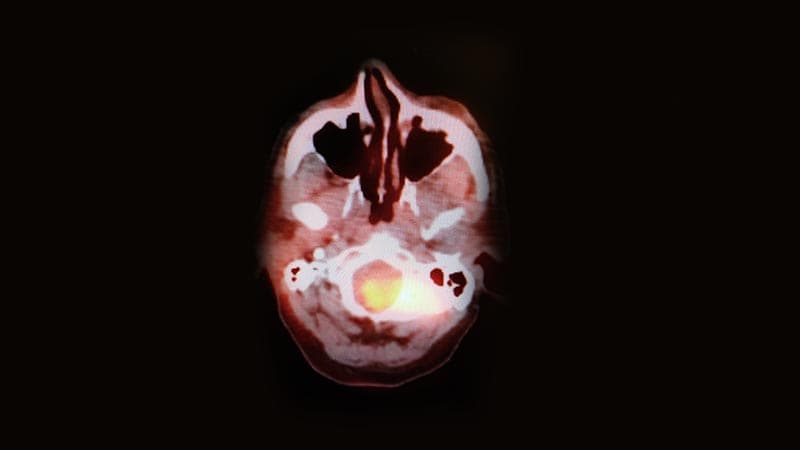In March of this year, in testimony on Capitol Hill, the head of the US Indo-Pacific Command (USINDOPACOM), Navy Admiral John C. Aquilino, said that China “will soon have the largest air force in the world.”
For some years now, the People’s Liberation Army (PLA) Navy has more warships than the United States, though only in number and not in tonnage, where they have a long way to go. He added: “The magnitude, scope and scale of this security challenge cannot be underestimated.”
In its 2023 report on Chinese military power, the Pentagon noted that the PLA Air Force (PLAAF) and PLA Navy (PLA) combined have more than 3,150 operational aircraft, excluding trainers and unmanned aircraft systems (UAS).
Interestingly, the United States Air Force (USAF) has around 4,000, and the US Navy, Marine Corps, and Army also have several thousand.
China is producing fighter platforms at an astonishing pace. It currently makes about 60 fifth-generation J-20 fighters a year, and the number will soon rise to 100. These are all domestic requirements. By comparison, the United States makes about 135 F-35s a year, of which nearly half are from foreign partners.
Many American and Indian analysts consider the J-20 to be roughly a fourth-and-a-half-generation aircraft because the parameters to be considered for the fifth generation are not common between the West and China. However, at the current rate of growth, Chinese air power could surpass that of the United States in the near future, the admiral said.
So it’s time to look at China’s growing air power.
Initial transformation of the PLAAF
The PLAAF currently has 400,000 active personnel and nearly 2,700 aircraft. It has come a long way since it used the MiG-15 in the Korean War. In the initial decades, it imported or domestically produced Soviet aircraft under license.
Later, when a rift occurred between the communist parties of the two giants, China began reverse-engineering Soviet and Russian aircraft designs. In the 1970s and 1980s, as part of the US’s ping-pong diplomacy, China managed to gain access to some American military technologies. But things changed after the Tiananmen Square protests and massacre in 1989.
The United States withdrew. Moreover, with the end of the Cold War in 1991, the United States had little support from China in combating Russia.
In the late 1990s, the PLAAF began to make substantial progress in transitioning to more modern air power with the acquisition and development of advanced aircraft such as the Sukhoi Su-27, Su-30 MKK, Su-35 and its reverse-engineered variants, the Shenyang J-11, J-15 and J-16.
In 2004, the PLAAF launched the “Strategic Air Force” force reform concept, which aimed to rebuild the PLAAF into an integrated combat force capable of conducting both offensive and defensive operations in the air and space.
The 2004 reform included changes in doctrine, equipment, training, education, organizational structure and strategic thinking. Its own designs included the Chengdu J-10 (albeit with initial input from the Israeli-backed Lavi program) and the Chengdu J-20 and Shenyang J-31 fifth-generation fighters. It also locally designed the JF-17 for export.
Latest approach and strategy
By the mid-2000s, the PLAAF had become familiar with precision-guided munitions, aerial refueling, AEW&C aircraft, and networked command and control systems.
Some uncertainties remained, including the inability to develop modern aircraft engines. However, the PLAAF’s strategic direction continued to evolve, with a focus on expanding its operational capabilities, including the development of new advanced fighters, long-range bombers, large transports, AEW&C, FRA, a variety of helicopters, and UAS.
Today, the PLAAF is recognized as one of the most capable air forces in the world, reflecting modern training programs and a strategic shift toward developing a formidable aerospace force capable of projecting power regionally and even globally.
Most importantly, the country has acquired the capability to counter US intervention in the Taiwan Strait by positioning quality and quantity combat assets in the Eastern and Southern Theater Commands.
The PLAAF has stepped up its joint operation efforts with the PLAN, increasing power projection and expeditionary strike capabilities and conducting joint patrol missions in the East and South China Seas. The PLAAF has developed sophisticated integrated air defense systems capable of providing coverage beyond the coast and borders.
China is the second country in the world and the first in Asia to deploy an operational stealth aircraft, while the second stealth aircraft is in an advanced stage of development.
Around the same time, the PLAAF introduced the PL-10 and PL-15 missiles to enhance its air combat capability. Due to improved domestic production, the PLAAF has managed to close the gap with the West, introducing indigenously developed airframes, composite materials, turbofan engines, advanced avionics and weapons systems. PLAAF fighter pilots fly an average of 100 to 150 flight hours per year.
Current PLAAF possessions
The PLAAF operates a fleet of nearly 2,700 aircraft, of which about 1,800 are combat aircraft (fighters, attack aircraft and bombers).
China has the world’s second-largest active fighter aircraft fleet and the third-largest total aircraft fleet. The PLAAF has nearly 1,200 fourth- and fifth-generation aircraft in more than 25 frontline combat brigades.
The J-10C, J-16, and J-20 are equipped with AESA radar systems, domestic WS-10 engines, standoff weapons, and long-range air-to-air missiles. The PLAAF also made substantial progress in the design and production of large aircraft, including the Xian Y-20 and WS-20 engines. All older Chengdu J-7 and Shenyang J-8 platforms have been retired.
Two Y-20 large transport aircraft of the Chinese People’s Liberation Army Air Force fly in formation.
Currently active major fighter aircraft include 580 J-10 (multi-role) variants, 245 J-11 (air superiority), 280 J-16 (multi-role attack), 300 J-20 (fifth-generation air superiority), 32 Su-27 (air superiority), 97 Su-30 MKK (multi-role) and 24 Su-35. China is accelerating production of the J-16, J-10 and their maritime variants as well.
They have nearly 180 H-6 aircraft (Soviet Tupolev Tu-16s), of which about 60 are H-6K cruise missile-carrying bombers. The H-6K is known in mainland China as the “God of War.”
They have about 320 transport aircraft, including 50 Y-20 (66 tons), 28 AEW&C and 21 FRA. There are about 25 electronic warfare aircraft and the PLA Ground Forces have about 300 attack helicopters.
China’s SAM inventory includes about 500 S-300s and their Chinese variant, HQ-9. 130 HQ-22 medium- to long-range semi-active radar-guided air defense systems were developed and manufactured in China. They have six S-400 complexes.
The J-16 evolved from the Su-27 and is not in the class of India’s Su-30 MKI or the USAF’s F-15EX. But its numbers have been increasing. Once the J-10C and J-20 get the new Chinese WS-10 and WS-15 series engines, supply chain issues will be resolved and dependence on Russia will be reduced.
The PLAAF is in no rush for large tankers until they start moving beyond the 1st Island chain. The new Y-20s have allowed older Y-7 and Y-8 light and medium transport aircraft to be repurposed for training or other secondary roles. The YY-20A tanker variant will soon be inducted in large numbers. The Y-20 AEW, the airborne early warning and control variant, is based on the Y-20B and is designated the KJ-3000.
There are about 180 Wing Loong-class MALE/HALE UAVs and a huge inventory of smaller drones, including drone swarming capabilities. China’s recently introduced Xianglong jet-powered UAS, the supersonic WZ-8, and the redesigned GJ-11 stealth unmanned combat aerial vehicle (UCAV) will make a huge difference.
J-20 GJ-11 manned and unmanned wing aircraft concept
Chinese air missiles
Air-to-air missiles (AAMs) are pushing performance and payload capacity to the limit. China is developing very long-range air-to-air missiles (VLRAAMs) that can strike targets at long ranges. The latest fifth-generation AAMs would have longer range and be able to identify smaller, low-flying targets such as UAVs. They would also keep the adversary’s large platforms at greater distances.
The PL-10 is an advanced short-range, infrared-guided, solid-fuel rocket-propelled thrust-vectoring AAM with an operational range of 20 km. China claims the PL-10 offers comparable performance to European ASRAAM and IRIS-T missiles, while offering superior kinematic performance to the AIM-9X.
The PL-12 (range 60–100 km) is a beyond-visual-range (BVR) active radar-guided AAM missile that is said to be comparable to the American AIM-120 AMRAAM and the Russian R-77.
The PL-15 missile with AESA radar and a declared operational range of 200-300 km is considered better than the American AIM-120 AMRAAM. China already has the PL-17 VLRAAM (400 km) which appears comparable to the Russian R-37M.
China is developing a more advanced long-range missile, the PL-XX or PL-21. It has been exploring dual-mode guidance capabilities, which use both active radar and infrared seekers. These capabilities improve target selection and make the missiles more resistant to countermeasures.
The PL-21 uses an active AESA radar and is considered comparable to the American AIM-260 JATM and the Russian R-37M. It appears to be an advanced but smaller variant of the PL-17.
PLAAF and the theater of operations commands
The PLAAF headquarters controls and supports the five Theater Air Forces Command (TCAF). Each TCAF has seven to ten brigades. Each brigade has three to six fighter groups totaling 30 to 50 aircraft. There are bases that exercise command and control over units (brigades) in their area of operations and conduct joint exercises. Brigades may contain several subordinate flight groups; one flight group has one type of aircraft.
Bomber, transport and specialist divisions are still to be reorganized into brigades and remain under the control of PLAAF headquarters and TCAF headquarters. The PLAAF has over 150 military airfields (air bases) spread across theater commands.
H-20 Bomber
China’s aviation industrial base
China continues to expand its formidable military-industrial base. The Aviation Industry Corporation of China (AVIC) has nearly 420,000 employees, compared with India’s Hindustan Aeronautics Ltd. (HAL), which has 28,000.
AVIC has 100 subsidiaries and 27 listed companies. Two Chinese defense companies are among the world’s top 10 and four are among the top 25. China’s centralized control allows it to leverage resources from industry, academia, finance, and research organizations with the ultimate goal of strengthening the PLA and increasing China’s “comprehensive national power.”
China also uses diaspora and cyber media to acquire technologies. It often buys critical technology industries abroad or enrolls its own academics there.
Anil Chopra


